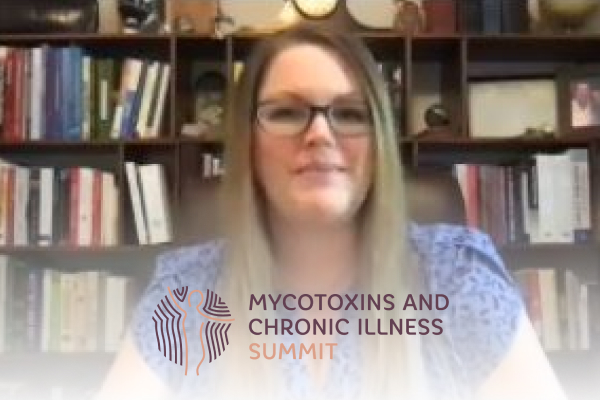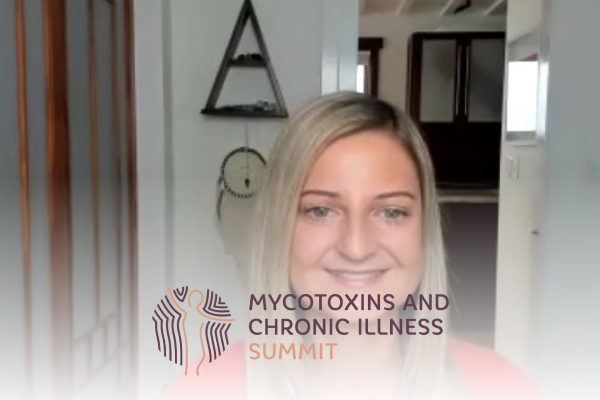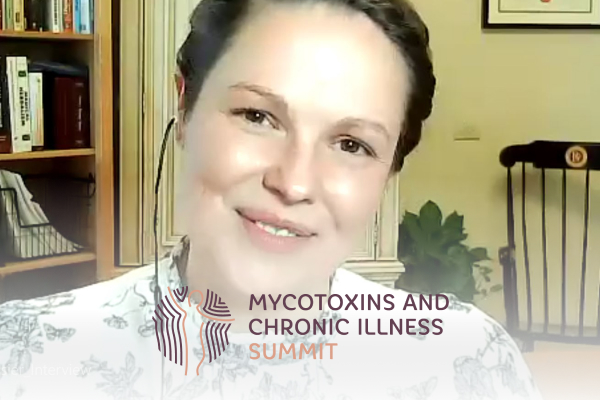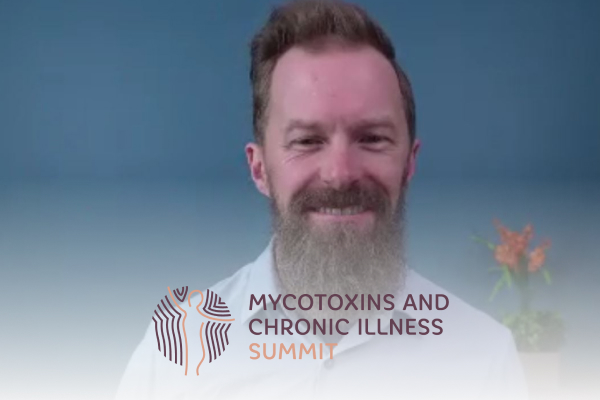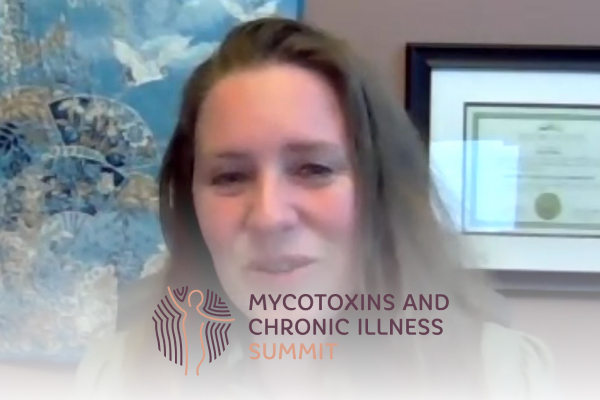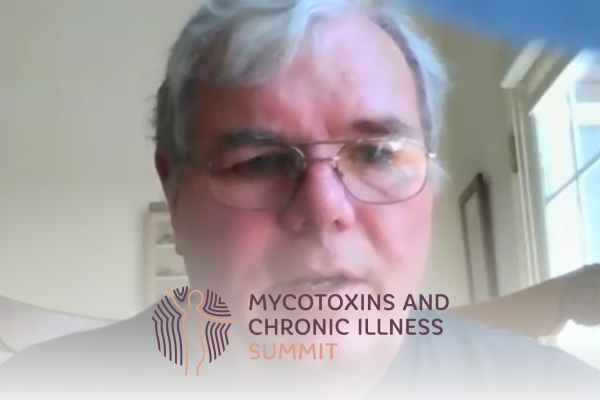Join the discussion below

Dr. Christine Schaffner is a board-certified Naturopathic Doctor who has helped thousands of people recover from chronic or complex illnesses. Through online summits, her Spectrum of Health podcast, network of Immanence Health clinics, and renowned online programs, Dr. Schaffner goes beyond biological medicine, pulling from all systems of medicine and... Read More

Dr. Boyd is a board-certified Naturopathic Physician at Immanence Health who specializes in Pediatric Neurologic Dysfunction, Complex Chronic Illness, Mold Illness, Vector-Borne Illness, and Immune Dysfunction. She has a passion for tackling the toughest cases head-on and has shaped her medical practice with a focus on children with chronic illnesses... Read More
- Complex chronic illness relates to pediatrics
- Mold to mycotoxins and its effect to the immune system
- Detox strategies
Christine Schaffner, N.D.
Welcome everyone to the mycotoxin and chronic illness summit. I’m thrilled to introduce my dear friend and colleague Dr. Tara Boyd. Who’s gonna be talking about mycotoxins in the developing brain. Dr. Tara Boyd and I have been working closely together for about seven years now. And she’s one of the team doctors at Immanence Health and a little bit about Dr. Boyd. She specializes in pediatric neurological dysfunction, complex chronic illness, mold illness, vector borne illness, and immune dysfunction. She’s a board certified naturopathic physician that obtained her medical degree from Bastyr University and holds a bachelor’s degree in biology and biochemistry from Hardin-Simmons University in Abilene, Texas.
She’s trained with myself for over seven years and following graduation from Bastyr, she completed a two year residency. Dr. Boyd also holds certifications in autonomic response testing, neurotherapy, hydrotherapy, craniosacral, and visceral manipulation. She has a number of memberships and she was born and raised in west Texas. And is a third generation medical practitioner who fell in love with medicine at a very early age, it was always her dream to not only practice medicine, but also be a medical detective, trying to find a diagnosis for those who no one else could. She has a passion for tackling the toughest cases head on and has shaped her medical practice with a focus on children with chronic illnesses and pediatric neurological conditions, including autism, spectrum disorders, PANDAS/PANS, ADHD and epilepsy.
Prior to achieving her medical degree, Dr. Boyd spent over 10 years serving clients through massage, bodywork and counseling. She knows that no single approach is right for every individual. So has been trained in wide range of modalities, including environmental medicine, ART, herbal venison, homeopathy, nutrition, psycho kinesiology, IB therapy, kanopy therapy, neural therapy, craniosacral and visceral manipulation, no matter the person or pathology that walks through the door, her goal is simple to educate, empower patients, to find lifelong health and vitality. She’s a true lover of nature and spends her free time gardening, hiking with her dog Shabaka, skiing, ballroom dancing with her husband. So please enjoy this wonderful lecture from Dr. Tara Boyd.
Tara Boyd, N.D.
Hi everyone, my name is Dr. Tara Boyd and I am a naturopathic physician in the Seattle Washington area. I’m at a clinic called Immanence Health, and I have been licensed for about five years now, but I’ve been studying complex chronic illness and especially the way that that relates into pediatrics specifically in autism and PANS and PANDAS for nearly about eight years now. So my talk today is going to be on mycotoxins and the developing brain. So our topics for today are going to be mold to mycotoxins and how that affects the immune system. How then that effect on the immune system is then linked to autism and PANS and PANDAS. Then we’ll talk about what to do about that. So we’ll talk about removing the obstacles to cure, detox strategies, and then lastly, some therapeutics.
So the first thing that I wanna talk about are what are mold spores? And then there are also these things called fragments, which are similar to spores, but more so when the mold is dead. So spores are a way that mold reproduce. So what they do is they actually put out these puff balls that contain millions of these spores, and then wherever those spores land, they then grow more mold. And so the spores are so small that they’re completely invisible to the naked eye cause they’re microscopic. Now fragments are actually from dead and dried mold. The thing is that they can also be disrupted. And when we breathe those in, they can then be also become pathogenic to us. So both of them when inhaled can colonize the nasal passages, the mouth and the lungs and our airways, and they can create acute inflammation and allergic type reactions. So let’s just talk about spores and the immune system.
So spores themselves can induce a multitude of immune reactions that can be inflammatory reactions, infectious type reactions that mimic or look like sepsis, such as aspergillosis, and then also allergic type reactions, which are IgE mediated. So these allergic reactions can be anything from rhinitis to hiving and wealth and skin rashes and itching to then also induction of asthma. And then kind of the big bad here is mast cell activation. So mast cells are a type of cell that is found in every connective tissue of the body. And the problem with the mast cells is that they release different types of enzymes and chemical components, such as histamine, proteases and cytokines that induce high inflammation in the body. And then spores not only recruit the mast cells, but they can also stimulate that degranulation. And which is the release of those chemical components that are inducing inflammation.
And then once recruited, these mast cells can and do induce other types of allergic reactions to many other substances. So not only are you gonna have these histamine and allergic reactions to the mold and the mycotoxins, but you’re also going to, we find have allergic reactions, to a whole slew of things that you’ve never been reactive to before that could be foods, could be herbs and supplements could be medications, all kinds of stuff. So then how do molds become mycotoxins? So what actually happens is when mold spores feel threatened, they release these mycotoxins, which are these little chemical toxic substances that they’re releasing in defense of themselves. Spores are a little bit larger.
So spores tend to not cross over into the bloodstream, but stay mainly colonizing in the nasal passage, in the mouth, the throat, the airways, the lungs and the mycotoxins are much, much smaller. So they actually will slip a little bit more easily into the bloodstream, and then they can create more of the systemic issues and reactions. So mycotoxins mimic multiple types of xenobiotics with respect to how they damage our routes of detox and immune modulation in the body. And if you’re not familiar, xenobiotics are different types of chemicals that actually should not be in the body and this can be everything from drugs to drug metabolites, to environmental pollutants, we think of those agricultural chemicals, those types of things.
And so if we think about the damage that they can do in the body, mycotoxins actually mimic that same type of damage, not only to these detox routes, but they can also damage multiple biochemical mechanisms and we’ll see a little bit of that later. So this is a list of basically what are some of the most prevalent and pathogenic mycotoxins that we find, and then the types of molds that they come from. And so most of these molds, we consider to be the most pathogenic molds out there as well. So aspergillus is definitely a pathogenic mold and we just saw a minute ago, there’s actually a condition called aspergillosis, which aspergillus can then get into the bloodstream and can look like sepsis. And then it also can cross the blood-brain barrier and create some other issues. And then in Enniatin B1 from fusarium is actually another really highly pathogenic mold and mycotoxin. Gliotoxin is also really common. Ochratoxin is also really common.
Those are some of the big ones that we see see the most common. And then also this trichothecenes. Trichothecenes is very pathogenic. It comes from, you can see these four here, but Stachybotrys is what we think of as our black mold. And we know how pathogenic black mold is. I’m pretty sure we’ve all heard of that before. And one of the reasons is because of this specific mycotoxin and then the zearalenone that comes from the fusarium is also extremely toxic to male and female reproduction, which we will see. And I am finding that more and more in my female population that are struggling to get pregnant or hold onto a pregnancy I find this one quite often. So how do these mycotoxins then affect the immune system? So aflatoxin is actually going to decrease leukocytes and lymphocytes.
So this is going to be immunosuppressive and when we have immune suppression, we run the risk of cancer cells being able to overgrow. And we do actually see an increased risk of cancer with aflatoxin. That’s again, you know, we think about it coming from that aspergillus and we see this quite a bit. In the Chaetoglobosin, this actually will disrupt cell division. And so we think about our repair mechanisms, the fact that we need cell division in every organ of our body to continue living. But then also if we’ve had any type of, you know, neuronal issues, neuronal cell death, brain inflammation, brain damage, and we’re meeting some of that neuro-plasticity of regrowing those neurons in the brain if our cell division is disrupted, then we’re gonna see an issue there too. And the problem with this one is that it actually will cross over into the blood-brain barrier. So if it’s crossing into the blood-brain barrier, we know it’s creating damage to the neurons.
The other thing that we know about this one is that it creates damage to the spleen and the thymus as well. And that is also gonna be immunosuppressive cause those are two of our main immune organs of the body. So the Citrinin is nephrotoxic meaning that it is toxic to the kidneys and can create quite a bit of an issue there. And then also it’s known to cause elevated blood glucose. And this is usually through the role of the glycogen metabolism in the liver. And when you have the artificially elevated blood glucose, we do see a little bit of an increased risk of diabetes, like syndromes or insulin resistance in the presence of this mycotoxin. And then there’s the Enniatin B1.
This is also one of the ones that I think of as kind of a really big bad in the developing brain of children. So we know that it crosses the blood brain barrier, which is a huge issue. And then what is the other huge issue that is happening is the depolarization of the mitochondria. So when we think about the mitochondria, we think about the electron transport chain and basically that is a biochemical pathway where different electrons and negative hydrogens and different things are coming in and feeding into that chain that is then going to lead to ATP and ATP is the energy production of our cells. It’s how our cells function. And it’s how we stay aware and alert when we’re thinking about mitochondria in the brain. If you have deep polarization, because those electrons are negatively charged, you’re going to create an issue where they’re not feeding into that chain very well. And therefore you’re not gonna have proper mitochondrial functioning.
And we do see a lot with autism and even with PANS and PANDAS, that there’s an issue with mitochondrial functioning in the brains of these kids. So, and we find this mycotoxin to be one of the reasons why. The other thing is we know it’s carcinogenic to the brain astroglia. The astrogliacytes are what actually will help create that blood-brain barrier. And so if they’re carcinogenic to that, then we know that they’re damaging to it. And this is probably one of the ways that it crosses into the blood brain barrier so easily. And then we know that it is immunotoxic to the fetus that is in its developmental stage. And we’ve seen, there’s some really compelling research that shows that there’s a higher instance of autism and PANS and PANDAS. When we find this mycotoxin in our moms when they’re pregnant.
So this is one of the reasons that, you know, my moms who come to me because I do this type of work, I’m making sure that I’m testing all of them for mycotoxins and making sure that if they’re there, we’re doing some therapeutics, which we’ll talk about later to make sure that that is not creating an issue with the developing baby. So then we have gliotoxins. Gliotoxins inhibit phagocytosis. So phagocytosis is where we have those cells called macrophages, which stands for big eaters. And so they’re part of our primary immune system that are some of the cells that go after pathogens at the very first of infection. And so when you suppress phagocytosis, you’re suppressing the immune system, and then we see with this, that it then allows all of these other pathogens to overgrow, which can become a real issue. And then ochratoxin A. Ochratoxin A induces a lot of oxidative stress and oxidative damage. And it is known to do that so in the brain as well.
So it is neurotoxic. It’ll also do that in the kidneys and be nephrotoxic. And then that oxidative damage can actually also then be suppressive to the immune system and so it’s immunotoxic as well. The other thing about ochratoxin A is that it decreases dopamine and we do see dopamine issues in a lot of times in these kids that are either on the spectrum or PANS/PANDAS. And then thinking of Stachybotrys so that black mold, the trichothecenes, this is going to severely suppress the immune system to where you have a drastic reduce of resistance to infection.
It also induces thrombocytopenia, creating blood bleeding disorders and is highly carcinogenic. So that’s one of the ways that black mold got its bad reputation was that it can induce a lot of cancer in people especially when you’re in it for a prolonged period of time. And then the Zearalenone again, we see male and female reproductive issues in this, infertility, and then it’s known to prevent the early stages of development of the fetus. So a lot of my females who are coming in and they’re having recurrent miscarriages, I do see this be a factor in a lot of those cases. Okay, so then how do these immune issues and immune stimulatory and suppressive mechanisms from the mycotoxins, how does this then lead into brain inflammation? So we talked about those mast cells and those mast cells were increasing the histamines and the cytokines. And both of those are highly inflammatory to the system and even to the brain, and we’ll see kind of how they cross into the blood brain barrier in a little bit.
So spores and mycotoxins also can affect sleep. And we know that our brain heals while it sleeps and it actually rewires and creates more of that neuroplasticity when we sleep as well. And then also the glymphatic system, which is the lymphatic system of the brain. So it’s how the brain drains and gets any types of toxicants or if there’s any, you know, cellular debris or anything that needs to drain out of the brain. It comes out through that glymphatic system. Well, that glymphatic system is 10 times more active during sleep. So if we’re, you know, hindering sleep at all, we’re not having that good draining of the brain. And then we can see right here, these microglial cells actually manage this system. So these are these microglial cells, and you can see how they’re attached in this web with the neurons of the brain.
And so they’re helping with that drainage of the brain, but we have other mechanisms of action of microglial cells as well. So microglial cells are actually a type of phagocytotic cell. So this is what a microglia cell looks like at rest. And then in the presence of neurotoxins or even mycotoxins or other types of xenobiotics, they then get activated and they become a phagocytotic cell. So they’re now one of those types of big eaters. The problem is that they not only we’ll go and try clean up the neurons, go and try and eat, I’m sorry, the neurotoxins, or go and try and eat the mycotoxins or any other thing that they find to be toxic or pathogenic in the brain, but they’re not specific.
So they will also eat up some neurons. And so then you’ll have neuronal death. And when all of that is happening, you’re also then gonna start recruiting other cells of the immune system that is gonna induce inflammation of the brain. And then other things that happen, so activated mast cells actually release a component called tryptase and this induces, these microglial cells as well. So not only do you have just pure mycotoxins, that will induce them, but an activated mast cell we’ll be releasing tryptase that will also then be recruiting them and activating them and creating more of that neuroinflammation. And through some of these processes, this is how mast cells actually increase the blood-brain barrier permeability. And we’ll see, in a moment, you know, having a permeable blood-brain barrier becomes extremely problematic especially if you’re developing in the womb or if you’re in early stages of life as a little baby or toddler.
And there are many studies that show that maternal immune activation and inflammation during fetal development is highly implicated in neurologic and neuropsychiatric disorders in children. So autism spectrum disorder also known as ASD, one of the big components, and we’ve just touched on all of this is a leaky blood brain barrier. And this happens through that muscle activation, through the microglial activation. And we’ll allow some of those xenobiotics heavy metals and other chemicals and substances across it and get into the brain. And once that’s happening, now, you have all these other toxicants.
So now you have some infectious pieces, but you also have some other toxicants in the brain and the body is going to go and try and clean that up. And when that happens, you start to have this kind of micro neuroinflammation, and this can be from, you know, cytokines from the immune system that are getting activated that are trying to go in there and clean, and what that ends up looking like it does ends up looking like an auto-immune in cephalopathy. So an auto-immune swelling or inflammation of the brain.
And there’s actually been some research coming out of Europe, where they’re now starting to want to call autism an auto-immune disease and saying that it’s actually an auto-immunity of the brain, but in truth, it’s the immune system being able to cross into that blood brain barrier because the blood brain barrier is leaky, and now there’s other substances in there. And so this big cleanup operation, but unfortunately what happens then is that you have inflammation in the brain, which then can damage different parts of the brain, including the amygdala, which is where we have our emotional centers and our, you know, our social connection in that type of a thing.
So thinking about that, symptomology of these kids on the milder side, there can be this kind of misappropriate social conduct, but then we can start to get into a little bit more severe. So there can be stemming, which can be anything from, you know, flapping of the hands to holding of the ears, you know, verbal stemming, even clicking of the jaw and stuff like that. And a lot of this is because the brain is overstimulated because when the brain becomes inflamed, those neurons are basically on fire. And now the brain is overstimulated and this can of course, lead into the child becoming non-verbal. And then unfortunately in severe cases, their self harm and even harm to others. And I do see, you know, as the children get older, especially if they’re boys and they get into their teenage years and they start having testosterone in the body that the self harm and harm to others can become quite a bit worse.
But if we can reduce this inflammation and we’ll get into that in a minute with some therapies, then we see a lot of this remit. So then PANS and PANDAS. So PANS and PANDAS are fairly similar in their symptomology picture. PANS is Pediatric Acute-onset Neuropsychiatric Syndrome. And then PANDAS is, Pediatric Autoimmune Neuropsychiatric Disorder Associated with Strep. So in PANDAS, strep is the primary pathogen. Whereas in PANS it can be anything. So PANS is kind of a catch all term because it can be happening from mold and mycotoxins, it can be happening from different bacteria, such as Lyme Borrelia, or Bartonella or any of those types of things. I also see it in some viral infections, such as Epstein-Barr things of that nature, but for the purpose of this talk, we’re really talking about those mold and mycotoxins, which can lead to that PANS picture.
And then I thought this graphic was great. I thought it was kind of cute for a not so cute situation, but it really depicts this molecular mimicry because that is what’s happening in PANS and PANDAS is that you have a pathogen like this little pink guy right here who kind of reminds me of a little parasite or even a spirochete like Borrelia. But what has happened is this pathogen has been allowed to cross into that blood-brain barrier, and then it’s trying to hide. So you can see how it has all these little pink spots on it. And you can see over here on this happy neuron, there’s also some pink spots. So what this pathogen has done is it has put antigens on its surface to make it look like it’s a happy little self cell, hoping that the antibody will leave it alone.
The unfortunate thing is that the antibody will actually look at both and start to look at both of them because it sees other antigens on this pathogen and knows that it’s not self. But it’s now alerted to the pink antigen and so it sees this over here and apparently doesn’t see the neurons happy face, but sees this over here and decides that they’re both foreign and they both need to die. And so that is what molecular mimicry is. And so then these antibodies then become auto antibodies because now not only they’re killing pathogens, but they are now killing self healthy neurons. And this starts to really induce inflammation in the brain and auto inflammation. And so those mold and mycotoxins that can then leak across that blood-brain barrier are getting into the brain and are not only themselves going through a little bit of molecular mimicry, but they’ve created that massive leaky blood brain barrier and so these other pathogens can get into the brain a little bit more readily. And I even see that, you know, kids who are doing well, but then suddenly get sick again, because that levering barrier is still leaky can have flares of their PANDAS symptoms.
And those symptom pictures are things like OCD, anxiety, some ragefullness, aggression, and even severe outburst. And the unfortunate thing is this can happen at any time. So I’ve actually seen this happen in adults who were fine, but then they got into a huge mold exposure. Their blood-brain barrier became leaky. Then they got, you know, a spider bite and got some Bartonella. And then they started having pimps like symptoms. So while this is mostly pediatric, it can’t even happen into adulthood. So again, why we wanna just be really careful of making sure we’re not in a moldy environment.
So then what do we do? So I always think of our therapeutic order. So whenever I’m thinking about my patient and how best to treat them, I wanna go with that naturopathic therapeutic of border. And so the very first thing that I think of is removing the obstacles to cure, because if we wanna throw supplements and herbs and all kinds of things that you forever, but you’re still in a moldy environment, we’re never gonna get anywhere. So we always wanna make sure that we’re cleaning up the environment as much as possible. So the first thing here is if there’s mold in the house, we’ve got to get it out. So my two favorite tests to test the home are the HERTSMI and the ERMI. The HERTSMI tests for the five most pathogenic walls and the ERMI test for a slew more. And these are little claws that you go around and wipe down and little vacuum attachments. And they actually then culture those grow whatever mold was in there. And then they can tell you, not only what’s in there, but to what level and what degree.
And so then you can start thinking about, you know, do we need to do any type of remediation? So I wanna talk about how there’s a difference between remediation and treating. So treating and there are a lot of mold companies out there that do this, and this is kind of the standard is that they will come in, they’ll spray a fungicide on the mold. And then they’ll spray a type of like white paint encapsule and they’ll encapsulate it. And then what happens though is within about 3 to 5 years, that mold breaks free again. And not only that, but generally those treatments don’t get at all. And so I’ve seen, you know, people treat everything and within a few weeks there’s little bits cause again, those mold spores right are puffing out there’s little bits of fingers that start to grow out, even further into the walls because they didn’t fully get it all.
Remediation on the other hand is actually when they come in and they remove all of the mold that they find. So I do recommend if we find mold, we do a full remediation and then always making sure that our air is clean. So HEPPA air filters are a really great way to make sure the air is clean. And then I do like to use Propolis vaporizers, which you can get from a couple of different companies, but they actually, you know, vaporize the Propolis into the air, which is sticky and the mold spores will actually stick to it and it kills them on the spot. So that’s a really great way. And then always thinking too about cleaning your surfaces. So if there’s been mold in the house, but it wasn’t too severe and we did a little remediation and then needed to do some cleaning, there’s a product called EC3 and you can actually wash your clothes in the EC3.
You can use the sprays, you can use it on carpets and all that kind of stuff. And then there’s HOCL, which is hypochlorous acid. And it is also a really great way to clean out. It kills the mold as well and clean that out. And then you can actually diffuse the HOCL in the air as well. So in thinking about removing the obstacles to cure. So I know that this is a talk about mold and I’m about to talk about electrosmog, but this is a really important topic when we think about mold, I actually had a teacher who once said that it is mold’s job to bring us back to the earth and if we agitated by putting it in the presence of a high electromagnetic field, it’s gonna do that job a lot faster. So we just wanna make sure that we’re not agitating the mold because it will the electromagnetic radiation from, you know, everything from our wifi routers to cell towers, to our cordless phones, to now we, most of us have, you know, smart refrigerators and smart ovens and stoves and all of that plus thinking about to the smart meters, you know, that are actually on the house and our computers and our microwaves and possibly dirty electricity coming out of our outlets.
All of that is going to agitate the mold. And if you look over here, you have these precious sleeping babies over here, and their little nervous systems are growing and are very sensitive and fragile. And we are bombarding them with all of this electromagnetic radiation, right? So we’re bombarding them with, you know, magnetic waves and electric waves. And then there’s radio frequencies, which come from our wifi routers and the cell phone towers. And those are kind of the big bad uglies. And so not only do we wanna think about, let’s not agitate the mold so that it becomes much more virulent and we can actually have stronger pathogenic reactions to it, but just our nervous system in general, because it is, you know, wifi and these high electrosmog environments are known to disrupt our sleep, which we saw earlier.
You know, that’s when our brain rests and repairs and also rewires. And then also when our glymphatic system is activated the most. So we wanna make sure that we’re not interfering with our sleep. And then also, you know, this also decreases melatonin . So wifi can actually decrease melatonin in the brain and the melatonin is highly antioxidative and anti-inflammatory, it is in my opinion one of the best ways to treat moldy brains. And so we don’t wanna be decreasing our natural melatonin in the brain by having a speed in that, the presence of that electrosmog. And then another way of removing obstacles to cure we need to think about cleaning up our diet. So I have over here, the 11 highest foods in mycotoxins, and not only are these, do these get mycotoxins or get mold on them and mycotoxins while they’re growing, but especially these grains. So the barley, the wheat, the corn, the rye, the sorghum, these grains, when they sit in their grain silos become incredibly molding.
And so they periodically, even if they’re organic, they periodically spray them with organophosphates while they’re in there in order to try and prevent them from becoming too moldy. So, you know, they have a level of mold that they allow them to become. So they’re super high in mycotoxins and then also thinking about dairy. So unfortunately, because of the way that most of our cows are treated and the way that they eat, they are found to have elevated levels of aflatoxin M1 and aflatoxin M1 has been shown to be possibly carcinogenic.
So we wanna make sure we’re removing those as well. And then depending on how bad the, you know the infection is and the pathogen, and then also the symptom presentation, we also wanna look at not having too many of these simple carbohydrates that will actually feed the mold and mycotoxins while we’re trying to get rid of them. And then if the mast cells are a picture, so if the mast cells are an issue, which usually they are, when we’ve had this whole mold issue, then we wanna also be careful of leftovers because leftovers, if they’ve been in there for 18 hours or more, they’re already starting to grow a little bit of mold and you may not see it. And it may not immediately create any kind of gut upset or belly upset or anything like that. But it can actually reactivate those muscles and start to induce that inflammation all over again. So we wanna be careful of that. So then detoxing.
So one of my favorite sayings is the solution to pollution is dilution. And so in thinking about detoxing right now what we’re talking about is really opening up our routes of elimination, our detox pathways, draining our liver, draining our kidneys, draining our lymph. So with our liver, we can think of things like liver compressions, which is a way to actually hold the liver both on top and bottom and be able to squeeze and kind of milk it and milk out some of that bile and get it flowing again. I also really like to use castor oil packs. It’s a great way to de flame the liver and also help with its flow again, as well. And even in the kids, you can do enemas.
So you just wanna be really careful and make sure that you’re doing them properly, but I have so many parents who have to do enemas with their kids. And you can do saline, you can do extremely dilute coffee. So you don’t wanna be too stimulating with the coffee, but coffee actually helps to activate the liver. And then you can also do some butyrate enemas, which really helps with not only mold and mycotoxin detox out of the liver, but can also help with colon integrity as well. And then there’s a ton of different types of homeopathic drainage remedies that work really well for the liver and then the kidneys, another huge route of elimination. So electrolytes and electrolyte water actually help with kidney profusion. And that is a really important aspect when you’re dealing with mold.
One of the things that I see very often in people who, and especially kids that I see have issues with high oxalates, and I’m seeing this more and more and more, so kids who have high oxalate issues and don’t tolerate the oxalate foods, I really find moldy kidneys. So using electrolytes actually increases perfusion through the kidneys, and then we can use galactose to help with kidney tissue, integrity and homeopathics to really help with that drainage and more profusion. And then I actually see the oxalate issues go away as well. So then thinking about the lymphatic system. So we wanna make sure that that’s all moving. So with lymphatic, we also have to think about glymphatic and just like we did compressions on the liver.
You can do compressions on the cranium as well, where you’re holding the cranium front and back and doing a series of squeezing to really actually help manually help drain that glymphatic system and then always manual lymph movement. So you can do manual lymphatic massage. You can do skin brushing at home. There’s different types of lymphatic creams that you can use topically in manually massage your lymph chains yourself. And that N sorry, excuse me. Then at Immanence Health, we actually have a tool called FLOWpresso, which is a phenomenal tool and it’s a series of compressions. So it’s an entire body suit that you’re in. And it’s a series of compressive movement, all moving everything towards the heart, as you should with lymphatic massage.
But it’s also infrared and PEF, which is pulsed electromagnetic field, which is a therapeutic electromagnetic field. And it is a really great way to make sure that you’re continuously getting that limp from moving and flowing, which is really important with the detoxing. And then with lungs, lungs is actually one of the best ways that we alkalinize our body, that we actually are exhaling highly acidic carbon dioxide and helping in that way. So thinking about doing those deep belly breathing or the mindfulness breathing, and then also sometimes you can do a little bit of nebulizing of the HOCL, and that actually will also help with lung tissue integrity. And then skin, let us not forget our skin. It is our largest organ of elimination. And thinking about saunas, saunas followed by cold showers, warming wraps, which warming ramps are actually where you wanna make sure the body is warm beforehand, but you’re actually wrapping the body in a cold wet sheet and then covering with blankets. And then the body has to actually warm that up.
And if you leave them there long enough and they start to sweat and detox, so a really great way to do that. And then also peat baths. So peat also known as moss mud. So mud from the molds will infuse the body with a ton of minerals and magnesium and things of that nature, but it’s also very drawing. And so it draws out a lot of toxicants out of the body, through the skin. So these are really great ways to open up those routes of elimination and start to dilute the amount of toxins, the amount of mycotoxins that we have in the body. So then therapeutics that we can think of always go to binders first. So one of the first things that you wanna do is to start to actually bind up those mycotoxins and those mold spores and get them out of the body. So zeolite clays are one of the best ways to do that cause they not only bind to mycotoxins, but they also bind to histamines in the body.
So they’re gonna lower inflammation in its totality as you do this. chlorella is always one of the best binders out there. It’s a plant binder. So it’s an intelligent binder, but the high chlorophyll plants such as chlorella and even spirulina are beautiful binders. They do bind a little bit more to metals than they do mycotoxins, but they are known to do that as well. There’s always activated charcoal, activated charcoal is one of the strongest binders out there. You do need to be careful when you’re binding with activated charcoal, because it will also bind to a lot of your other minerals and nutrients as well. So you wanna be careful not to do it for a prolonged period of time, but as a rescue binder, especially if you’ve been in an acute mold exposure, it’s really great. And then there’s also these activated carbon binders.
So there’s a company called CellCore and we at Immanence work with them a lot and they have these really beautiful binding remedies that are activated carbon and humic and fulvic acid and they tend to also work really well. And then we start to get into a little bit more thinking about killing. So herbs that can help with killing of the mold and the mycotoxins are things like oil of oregano, garlic and even though it’s not really an herb, propolis again, and you can take propolis internally as a tincture. And for those of you who don’t know propolis is actually what the bees coat the inside of their hive with that’s highly antimicrobial and antifungal, but you can take it internally, you can vaporize it. There are actual vaporizers and diffusers where you can, you can inhale it. So you can actually put this little mask over your nose and mouth and can inhale it.
And then it helps to kill any of those colonies in the nasal passage and the respiratory tract. And then also thinking of liver supportive herbs, because again, liver is one of our main routes of detox, especially of mycotoxins. So things like dandelion or milk thistle or anything like that, to help with that liver drainage and clean up. So supplements and there’s a slew of supplements. That’s actually really great different types of vitamins and stuff. These are just some of my top. So again, that melatonin.
Melatonin is one of the best ways to detox the brain and also de flame the brain. Now, in order to really get in there, it should be liposomal or it should be topical. So we can actually do higher doses of melatonin topically to the skin. Or you can take liposomal oral that’s a little bit, a little bit lower in milligrams, again, butyrate, cause you can take butyrate orally, it’s gonna help to bind up some of those mold spores and mycotoxins that might be in the gut. And then it’s also gonna help with tissue integrity of the intestinal walls as well. So it will also help with a little bit of permeability of the possibility of a mold or mycotoxin escaping from the gut into the bloodstream. And I love black cumin seed oil. So not only does it have some antifungal properties, but it is also highly anti-inflammatory and immune modulatory. So you get this really beautiful therapeutic picture here with a black cumin seed oil.
Now with kids, it can be a little bit difficult to get them to take it. It is quite pungent, but most of my parents just try to mix it in some sort of, you know, food medium that maybe hides it a little bit, but then there are the kids who don’t mind it and they just take it, but it is quite pungent, but it’s a very profound therapeutic and then glutathione and especially glutathione in combination with ALA. These two can really help again with, you know, moving through the liver, but also help to detox out the brain. And then the ALA that alpha lipoic acid also helps with neuron integrity in the brain as well. And then because some of those biochemical pathways have been disrupted at this point, you can use some co-factors like B6 and B6 can help with that 5HTP, that 5-Hydroxytryptophan, which also, you know, is in that pathway to serotonin and the melatonin.
And so these can help with some of those neurons in the brain and help with that kind of, you know, ATP production and functionality of cognition in the brain again. And then medication. So my favorite antifungal, if I’m going to use a medication, so if I’m moving up in that therapeutic order, you know, we’re just not getting to where we need to be. So I ended up going to medications. Itraconazole also known as sporonox is a really great antifungal and I use it in kids all the time. It’s, you know, it, not only is it a great antifungal, but it’s also fairly gentle in the liver and the kidney. So I don’t see it being liver toxic or kidney toxic, which is why it’s the main one that I use also possibly using Fluconazole if needed and then Cholestyramine is a medication, but it’s used as a binder. So it is a very, very strong binder for mold and mycotoxins, I don’t use it a lot in kids.
I find it to be a little bit too strong, but sometimes I have to and if I do, we just really wanna make sure that we’re opening up all those other channels of elimination, especially the liver and the gut, cause Cholestyramine can be constipating. So we just wanna make sure that, you know, we’re having adequate bowel movements and all of that. Okay, so in conclusion, mold reproduces by releasing spores. Spores when threatened or agitated will release their mycotoxins both spores and mycotoxins have an effect on the immune system, which then will activate inflammatory markers, these inflammatory markers cross, and we’ll even create leaks in the blood-brain barrier.
Then the brain becomes inflamed. This perpetual inflammation, especially if occurred in utero or in the early stages of life can play a really big role in autism, in PANS and PANDAS. So then what we do from there is we want to remove the obstacles to cure. Think about how our solution to pollution is dilution and open up those detox channels and pathways of elimination. Then we wanna use natural therapeutics to kill, bind, remove and repair and then if needed, use those pharmaceuticals that will also help with our killing and binding and removing. All right, everyone. Well, I hope you enjoyed this and I hope you learned some things and it was good to see you. Thank you. Goodbye.
Downloads

